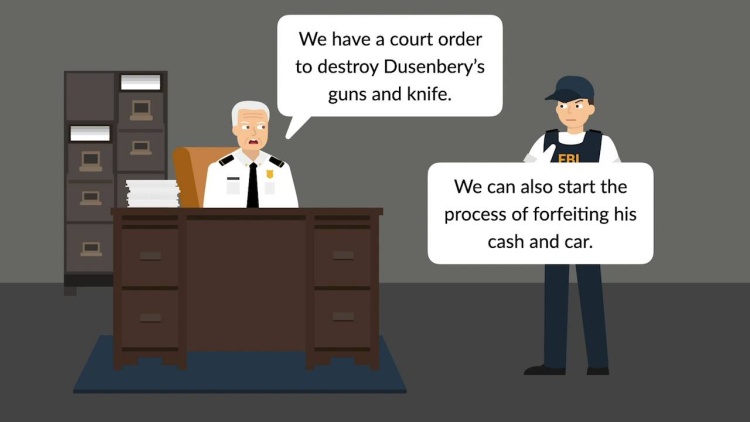Dusenbery v. U.S.
Supreme Court of the United States
534 U.S. 161 (2002)
- Written by DeAnna Swearingen, LLM
Facts
The Federal Bureau of Investigation (FBI) seized cash and a car in the course of a search of the home where Dusenbery (plaintiff) was arrested. The FBI sought administrative forfeiture of the property under the Controlled Substances Act (CSA). The FBI sent written notice of the pending forfeiture by certified mail to Dusenbery, care of the Federal Correctional Institution (FCI) in Milan, Michigan, where he was housed. In addition, the FBI mailed notice to the address where Dusenbery was arrested and the town where his mother lived. Notice was also published in the newspaper. When no one asserted a claim to the property, the FBI declared forfeiture in 1988. In 1993, Dusenbery sought the return of all seized assets under the Federal Rules of Criminal Procedure. The motion was denied, but the United States Court of Appeals for the Sixth Circuit vacated and remanded. The district court then conducted discovery. An FCI mailroom officer explained that he signed the certified mail receipt for the letter sent by the FBI, at which point he would have logged the letter and turned it over to Dusenbery’s “Unit Team,” who would sign for it and then deliver it. Unfortunately, the Bureau of Prisons (BOP) only maintains logbooks for a period of one year. Dusenbery and the government (defendant) motioned the court for summary judgment. The lower court entered judgment on behalf of the government. The appellate court affirmed. Dusenbery petitioned the United States Supreme Court for a writ of certiorari, which was granted.
Rule of Law
Issue
Holding and Reasoning (Rehnquist, C.J.)
Dissent (Ginsburg, J.)
What to do next…
Here's why 899,000 law students have relied on our case briefs:
- Written by law professors and practitioners, not other law students. 47,000 briefs, keyed to 994 casebooks. Top-notch customer support.
- The right amount of information, includes the facts, issues, rule of law, holding and reasoning, and any concurrences and dissents.
- Access in your classes, works on your mobile and tablet. Massive library of related video lessons and high quality multiple-choice questions.
- Easy to use, uniform format for every case brief. Written in plain English, not in legalese. Our briefs summarize and simplify; they don’t just repeat the court’s language.





